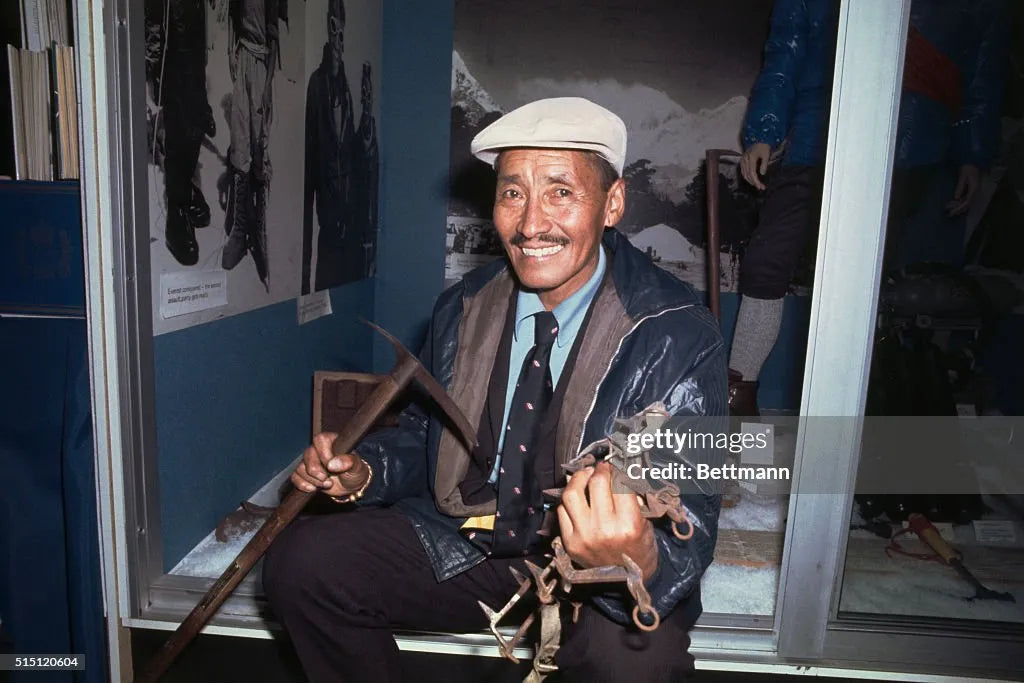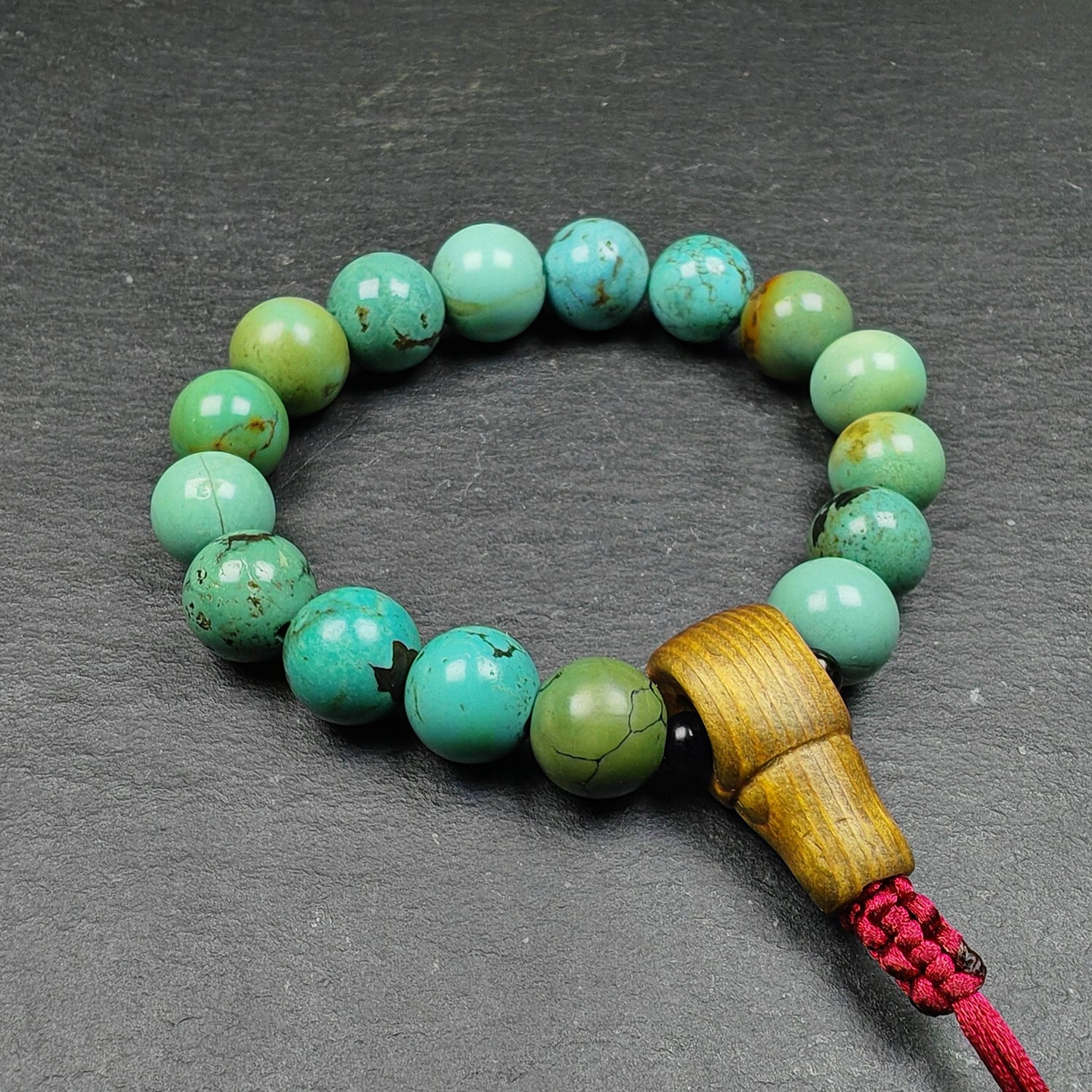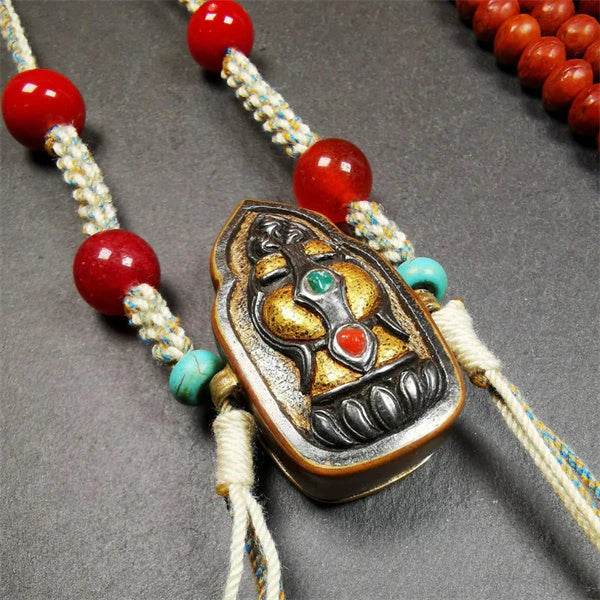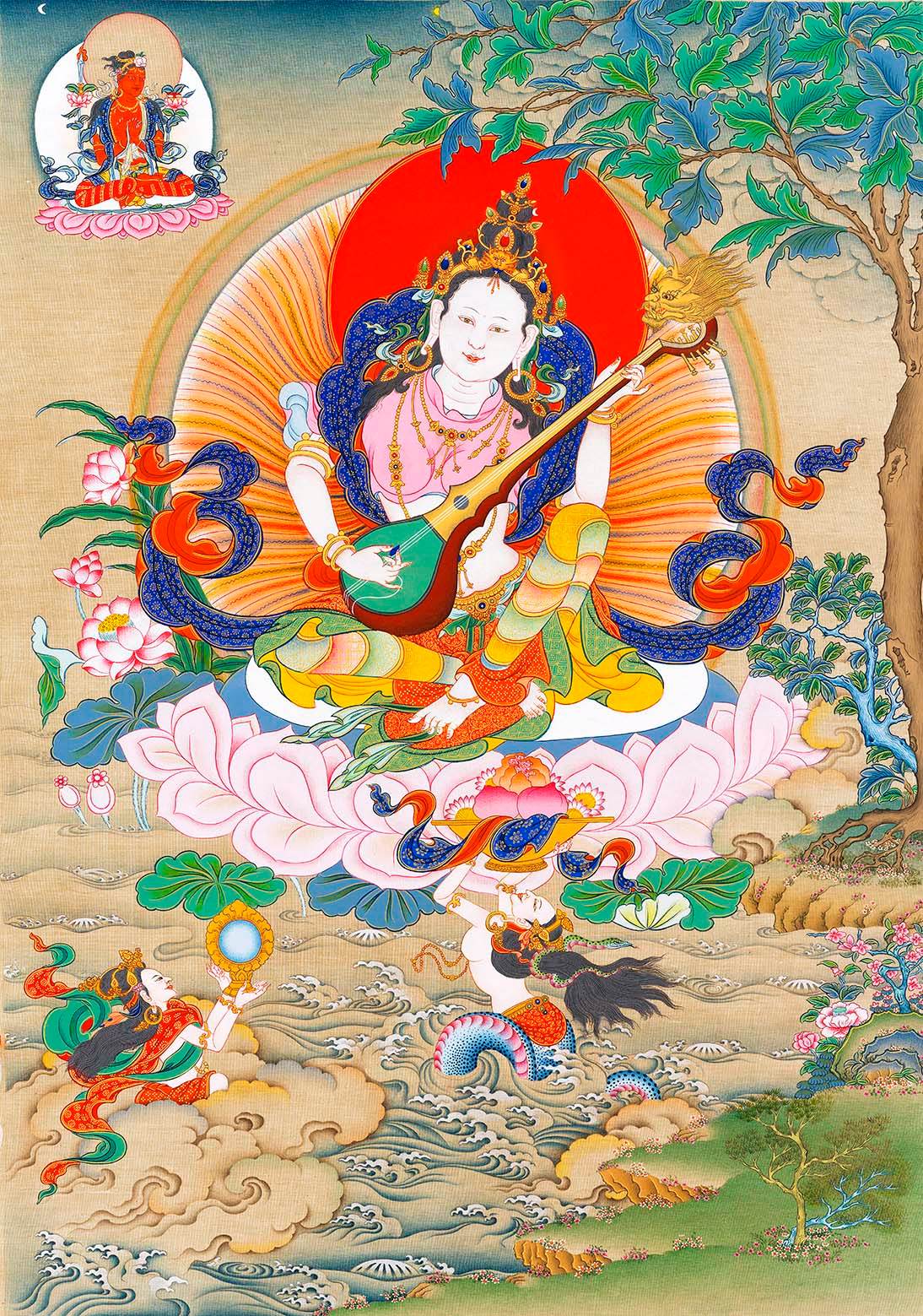
To be a hero, or a capable servant? ▎ Tenzing Norgay (III), the first to summit Everest
They were ordinary men when they summited,
but returned as heroes to the world.
Yet it changed nothing—
both remained simple and humble,
devoting the rest of their lives
to giving back to the people of the Himalayas.
— Jamling Tenzing Norgay

July 3, Tenzing in London,
1953, ©gettyimages
After the Summit
On their descent, climber George Lowe climbed up to meet them with hot soup. Upon reaching camp, the expedition's radio operator announced their success to the world. The news of humanity's conquest of Earth's highest peak was transmitted by radio from the small town of Namche Bazaar at Everest's base all the way to London.
On June 1, 1953, Queen Elizabeth II received the joyous news on the eve of her coronation. Later that year, Hillary and expedition leader John Hunt were knighted by the Queen. Tenzing, not being a citizen of a Commonwealth nation, received only the lesser George Medal of the British Empire.


The climbing team arrives in London and receives honors from the Queen,
1953, ©gettyimages
Yet this did nothing to diminish his status as a hero worshipped by millions. The sudden fame that followed left him utterly astonished.
"I had never been on television—hadn’t even seen a set before."
He received admiration from Nepalis, Tibetans, and Indians alike. In Kathmandu, crowds surrounded Tenzing, chanting his name, lifting him high on their shoulders, and tossing him into the air. Whispers spread through the streets—tales of his extraordinary three-lobed lungs and a heart rate twice that of an ordinary man.

July 1, the trio receives honors
1953, ©gettyimages
After descending from Everest, people prepared two purses for him—each intended to buy him a house.
As a school headmaster, his new job paid a monthly salary of 850 rupees. The authorities made an exception and awarded him a trucking license—a lucrative business in Darjeeling, where the narrow, steep, and winding roads imposed strict limits on the number of permitted vehicles. This license earned him an additional 500 to 1,000 rupees per month.
By Sherpa standards, this was immense wealth. An ordinary porter earned 3 rupees a day, while a magistrate made 5 to 10 rupees.


The celebrated trio,
1953, ©gettyimages
The Beginning of Controversy
On May 29, Tenzing and Hillary reached the summit, accomplishing their historic climb while also igniting an endless debate.

Tenzing picking souvenirs for his family,
1953, ©gettyimages
The primary question was: Who actually reached the summit first? This inquiry came from the outside world, from a public accustomed to the idea that there must always be a winner. Climbers—especially partners like Tenzing and Hillary—seemed to lack any fervor for personal triumph. Reporters relentlessly repeated the question: "Between these two men, who deserves the glory of being the first to conquer Everest, and who was merely his follower?"
In his 1955 autobiography Tiger of the Snows, Norgay revealed that Hillary was the fortunate one.

Mountaineering equipment displayed in museum,
Undated, ©gettyimages
Not far from the summit, Hillary and I stopped... I wasn’t thinking about "first" or "second." I didn’t say to myself, "There is a golden apple up there—I will push Hillary aside and take it for myself." We moved slowly, steadily, and then we were there. Hillary stepped up first, and I followed.
Now the matter is settled, and I am ready to be judged.

The team and their families gathering,
1953, ©gettyimages
Another controversy arose when Kathmandu rejoined the world timeline.
Hillary and Hunt were knighted by the British Queen, while Norgay received the George Medal for his efforts in the expedition. This disparity sparked fierce backlash from Nepalese nationalists. The lack of official recognition fueled growing unease over Norgay’s treatment—a sentiment compounded by the fact that, for years, mountaineering accolades had been primarily driven by men who believed in white superiority.
Adding to the tension, reports emerged that Indian Prime Minister Nehru had rejected a knighthood nomination for Norgay.
Expedition leader Hunt once told reporters: "Tenzing was ‘a fine climber within the limits of his experience.’" This phrasing only worsened matters—its defensiveness implying Norgay lacked knowledge of European climbing techniques, a bizarre claim about the man with more Everest experience than anyone alive. Norgay publicly objected to this characterization and grew distant from Hunt and the expedition’s other British members.

The trio among the crowd,
1953, ©gettyimages
Though Tenzing usually tried to stay above conflicts, he still felt deeply hurt when hearing Westerners claim that "with proper leadership, many Sherpas could have climbed Everest." This happened more than once. When discussing such remarks, he would press his chest and mutter about "something black inside"—but only when emotions ran high. In calmer, friendlier moments, he seemed more at peace.
"Friends climb mountains together," he said. "You help me, I help you—it’s the same." He strung the words together slowly, pondering, his hands making pained yet graceful gestures. Then he added: "If I say I was first and Hillary second, or Hillary says he was first and I second—it’s no good. We were together all the way."

Mountaineers climbing in mutual support,
1953, ©gettyimages
A New Dilemma
Additionally, Tenzing hoisted the flags of Britain, Nepal, India, and the United Nations at a vantage point overlooking the Himalayas.
This feat liberated him from the grueling life of mountain climbing and led him to a new career involving contracts, publicity, and profit calculations. Though more lucrative, it brought its own pressures. Like many celebrities, he lacked training in public relations—compounded by his halting English.

The two watching their own color documentary,
1953, ©gettyimages
Tenzing's life was utterly transformed—an obscure native of a little-known mountain tribe suddenly became a world-famous international hero.
He adapted to his new life with grace, though it was not always to his liking. He became a symbol, unwittingly drawn into controversies he neither understood nor cared about. Yet he remained a simple man who loved and understood a straightforward way of life. When those around him grew accustomed to using one another for their own ends, his sense of ease vanished.

With his 14-year-old daughter in London,
1953, ©gettyimages
Norgay later said that had he foreseen the fame his achievement would bring, he would never have climbed Everest. To some extent, he was seen as a prophet without honor in his own country. He understood all too well how public division over whether he was a hero or merely a capable servant only compounded his troubles.
From that day on, Tenzing became a symbol of Sherpa strength and their contributions to Himalayan mountaineering. Willing or not, he had become an undisputed global celebrity—honored with awards and warmly received by world leaders and heads of state.

Tenzing signing copies of his autobiography,
1979, ©gettyimages
He received countless invitations, traveling the world by plane to deliver speeches. He became the first Field Director of the newly established Himalayan Mountaineering Institute, a position he held for 22 years. He named his large house in Darjeeling "Ghang Lha," a surname imbued with special significance tied to his origins.
"It’s been a long journey... from a mountain laborer, a burden-carrier, to a man draped in medals, flown around by airplanes, worrying about income tax."
His children
In 1954, the Himalayan Mountaineering Institute was established in Darjeeling, with Tenzing Norgay appointed as its first Field Training Director—a position he held for 22 years. He converted his Darjeeling rental house into a small museum, displaying his equipment, trophies, and photographs, where he stood duty daily from 10 AM to 4:30 PM.
He was a striking figure—sun-darkened, impeccably groomed, with gleaming white teeth and a friendly smile. Typically, he wore Alpine-style Western attire: a bright silk scarf, gray sweater, knee-length breeches, woolen stockings, and thick-soled Oxford shoes.

The two reunite in Wales after 20 years,
1973, ©gettyimages
In January 1975, appointed by King Jigme Singye Wangchuck of Bhutan, Norgay served as guide for the first USA tourist group permitted to enter Bhutan. In 1978, he founded Tenzing Norgay Adventures, offering Himalayan trekking expeditions. The company was taken over by his son in 2003.
Norgay had three marriages. His first wife, Dawa Phuti, died young in 1944, leaving behind one son and two daughters. Their son, Nima Dorje, tragically passed away at age four. His next wife, Ang Lahmu—his late wife’s cousin—bore no children but raised her two orphaned nieces until their marriages. His third wife, Dakku, was wed while Ang Lahmu was still alive, following Sherpa custom. They had three sons and a daughter, who later married a lawyer.

Tenzing's second wife and two daughters,
1953, ©gettyimages

Tenzing's third wife,
1973, ©gettyimages
His second son, Jamling Tenzing Norgay, later followed in his footsteps. Jamling once told reporters, "I wanted to climb since I was 18, but my father refused. He said: ‘Why should you go to the mountains? I’ve already climbed for you. You don’t have to work there.’ His core belief was: ‘I climbed, earned money—all for you, to give you the best education and everything possible.’"
In 2003, Jamling and Peter Hillary (son of Edmund Hillary) summited Everest together, marking the 50th anniversary of their fathers’ historic climb.

Tenzing and his son Jamling,
1973, ©gettyimages
Later, when speaking of his Everest experience, he said:
"My mountain is not just dead rock and ice—she is warm, kind, and alive. Like a mother hen, with all other peaks as her chicks under wings."
Beyond surpassing his people's renown, Tenzing achieved something greater: while being the first to summit Everest, he also made Sherpas globally celebrated for their courage, mountaineering skills, and remarkable character.
Sherpas comprise one-fourth of all Everest climbers, yet account for one-third of its fatalities.

Jamling honoring his father's legacy,
2008, ©gettyimages
He later published several books through dictation, offering a timeless narrative that revealed the Himalayas' last unexplored era.
On May 9, 1986, Norgay passed away from a cerebral hemorrhage in Darjeeling, West Bengal, at age 71. His body was cremated at the Himalayan Mountaineering Institute—a place he frequented in life. During the Buddhist ceremony, held under torrential rain, Sir Edmund Hillary sat beside Tenzing’s widow Dakku, while thousands of mourners—locals and climbers alike—gathered to pay tribute.

Tenzing Norgay (1914-1986),
©gettyimages
The procession to honor him stretched for kilometers.
His story extended far beyond the summit.
This article is translated from Aguo's blog.







1 commento
ybivsz